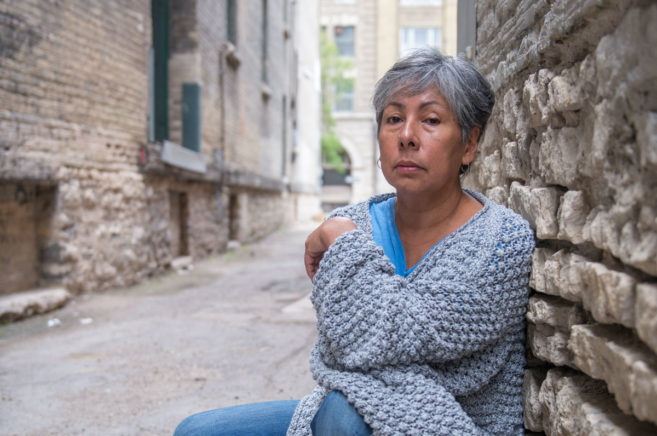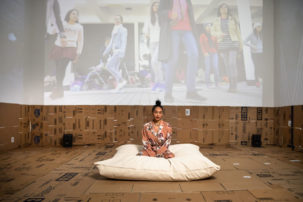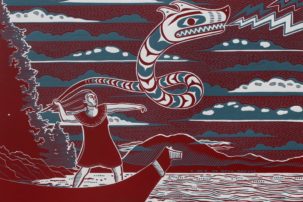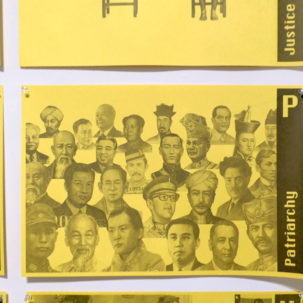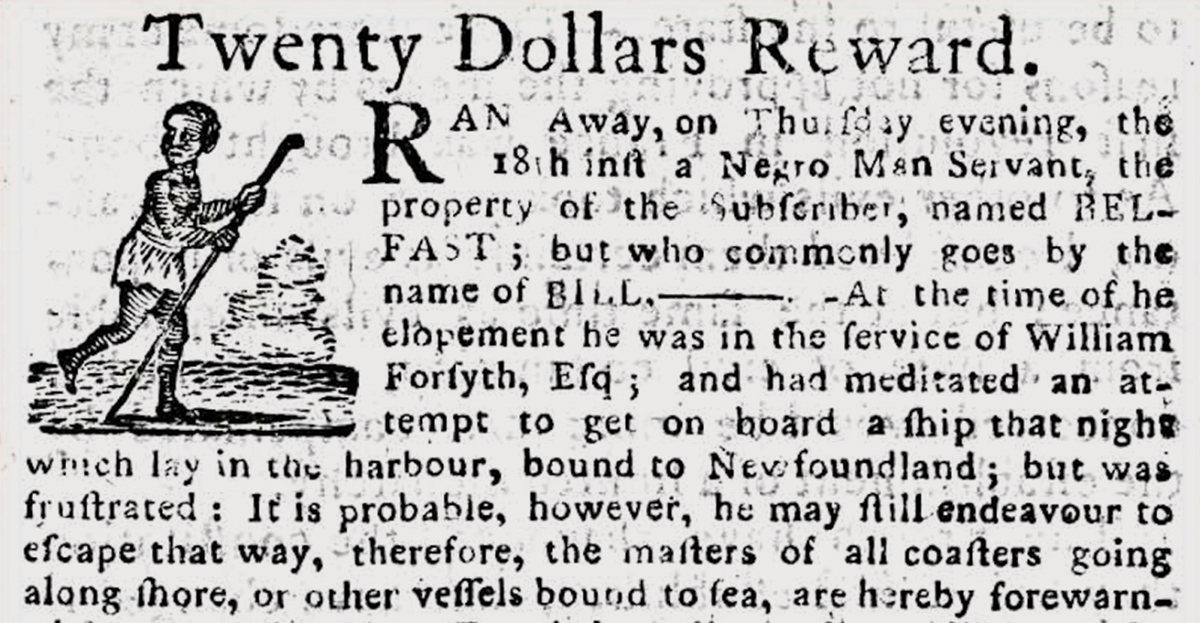
Charmaine A. Nelson, a professor of art history at McGill University in Montreal, has made groundbreaking contributions to many fields of study, including the visual culture of slavery, race and representation, Black Canadian studies and African Canadian history.
She has published six books focused on postcolonial and Black feminist scholarship, transatlantic slavery studies and Black diaspora studies, and her current research examines fugitive-slave advertisements found in 18th- and 19th-century newspapers in Nova Scotia and Quebec, arguing that they constitute an archive of textual “portraits” of Canada’s enslaved peoples.
Nelson’s work has put her at a unique advantage for considering kinship relations between enslaved Black and Indigenous peoples in Canada’s history—relationships that have been lost within the nationalistic and Eurocentric Canadian archive.
Lindsay Nixon: The term Indigenous is so loaded and can mean so many things. How have you been thinking about it in your work?
Charmaine A. Nelson: I think about the parallel histories of people of African descent and Indigenous or First Peoples in territories that became Canada—the parallel histories under colonization by the French and the British, and under enslavement (in transatlantic slavery).
Our histories and stories became inextricably linked because we were literally enslaved together, or suffered colonization together. Who is doing the work to recuperate those stories and the shared knowledge—and shared knowledge of resistance, too? I see it as an area that is forgotten.
Indigenous studies are going on, and Black Canadian studies are going on, but I think there’s a gap—a hole in the middle, where we’re overlapping. That’s a fruitful area for research.
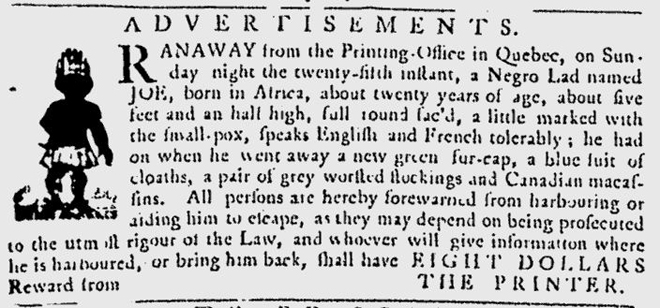
LN: I know you’ve been focusing on fugitive-slave advertisements as visual documents. Can you expand on that?
CAN: My next project is looking at Canada, specifically Nova Scotia and Quebec, and doing a comparative analysis with Jamaica. Fugitive-slave ads were placed in newspapers by owners whose enslaved labourers ran away—usually trying to escape permanently. Newspapers [during the 18th and 19th centuries] ran weekly, not daily. Far more people would have escaped than we’ll ever know about. Because if an enslaved person couldn’t escape detection for a week, then the owner would get them back, and not even run the ad. So when we find even one ad it usually tells us that a person was able to get away for at least a week.
The ads describe the person who ran away—usually first name only, because last names got stripped. Africans were renamed when they made it to the Americas as slaves, and their last names became the name of the person who owned them. That’s why in Brazil, African Brazilians have Portuguese last names, and why a person like me (my parents were both from Jamaica) has a name like Nelson, which is an Anglo last name.
Besides that, the descriptions were usually the person’s age, if they knew it, because often they didn’t know their age. The slave owner in many cases didn’t own the enslaved person from birth, so ages were guesswork based on whatever the previous slave owner told them. The [ads also included] height—usually in really precise measurements—a description of the body type, usually something about the hair and the clothing. But also scars and marks on the body, missing teeth, missing fingers, whip marks, scarification and branding.
The bulk of the information was meant to be visualized. The reader was meant to read the text, make a mental picture, spot the enslaved person and turn them in for a reward—almost every ad had a reward. But the reward was coupled with a threat: “If you harbour or help them, I will pursue you to the full extent of the law.” Often the smallest parts of the ads detailed how the person spoke and what languages they were speaking.
The bulk is visual, and I’m arguing that this visualization is a portrait. But it’s a very dubious one, because often it’s incorrect. A lot of the time the white owners didn’t know how to interpret African dress culture, for instance. So they might describe a head wrap as a ribbon, because they don’t know what a head wrap is.
The enslaved people demonstrated a lot of sophisticated forethought in their escapes. They would do things like hide clothing in town and then immediately change their clothes once they escaped. There was all this deception necessary in the resistance of the enslaved that was performed on the level of the visual, because what they were trying to do was pass as free Black people.
What does it mean, then, to call these ads portraits, even though they were unauthorized, and to acknowledge that in distinction to this, in a legitimate, hired “high art” portrait, the sitter wanted to be represented? If you were a fugitive enslaved person, you didn’t want to be represented. These were representations that could re-impose the institution of slavery. What does it mean that there was this wide circulation across the Americas of such unauthorized representations?
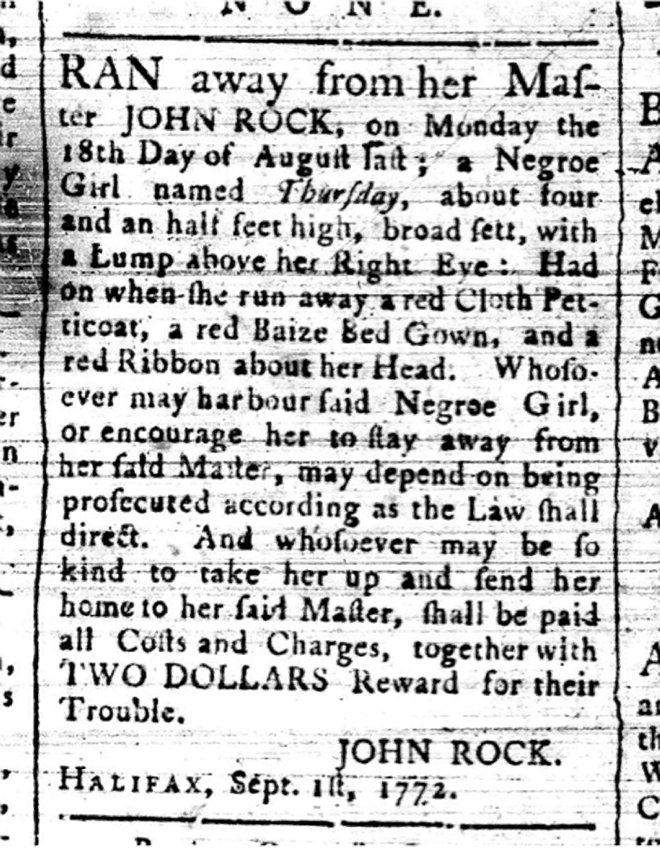
LN: Are there alternative ways of reading the advertisements?
CAN: Yes, just the fact that they exist as a repository shows that Africans and Indigenous peoples were resisting all of the time, all across the Americas, wherever they were enslaved. Just the fact that we have fugitive-slave ad repositories in Nova Scotia, Jamaica, Barbados and Brazil (for instance) means that enslaved people were always running away.
You can piece things together and start to speculate, but you rarely get the definitive answer, because there’s a moment where the archive lets you down. The colonial archive, created by Europeans and Euro-Americans, was strategically designed to collect data that was meant to perpetuate enslaved or unfree status.
LN: You’ve worked with clothing art as possible evidence of hybrid Black and Indigenous identities. Could you tell me more about this?
CAN: First I should back up. In Quebec, the French were colonizing the region up until 1760, when the British took over. When Quebec was part of New France, they were enslaving Indigenous peoples and Africans simultaneously. When the British showed up, one of the first things they did with the Treaty of Capitulation at Montreal was to say to the French, “You can keep your slaves.” And then the British, who in some regions were only enslaving Africans, actually adopted the French practice of enslaving both African and Indigenous peoples.
James McGill, the founder of McGill University, at different points in his life owned both Indigenous and African enslaved people. There are ads in Quebec under the British regime for both fugitive Africans and fugitive Indigenous peoples—a catchall term for Indigenous enslaved people was panis (panise for females).
Scholar Frank Mackey has attempted to excavate all the fugitive-slave ads for people of African descent in the Montreal and Quebec Gazettes. He has found about 50 ads, and the clothing descriptions are paramount. Slavery studies historian David Waldstreicher says, “Describing the clothes is like describing the person,” since poor whites and unfree people in the 18th and 19th centuries usually had only one set of clothes. Their clothes seem to have been a combination of European clothing (petticoats, breeches, etc.), but often moccasins, too. Therefore, we know that Indigenous clothing was a part of [enslaved peoples’] wardrobes as well.
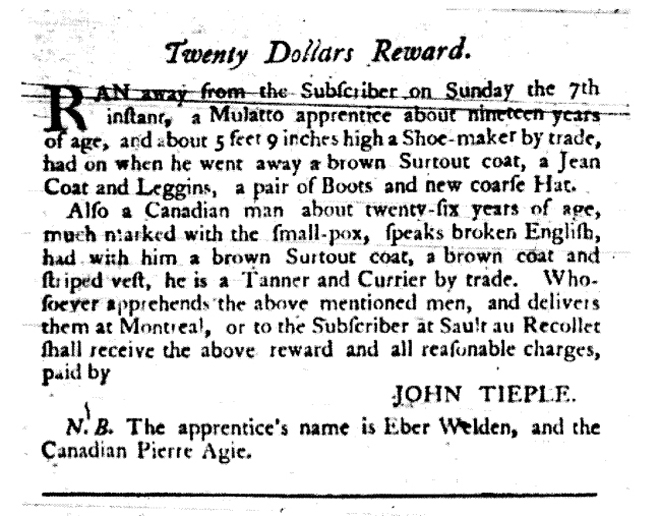
LN: Is there anything else you wanted to mention in relation to the themes we’ve discussed that you didn’t get to say?
CAN: There must have been households that were enslaving Indigenous and African people at the same time. What did that look like?
What did those alliances look like in terms of love relationships, familial bonds, having children together, cooking together, eating together and sharing kinship together? How many of the fugitives being described in some terminology that we consider to be of African descent are actually mixed-race—part-Indigenous and part-Black, but the white owners were misreading their bodies? How sizeable was that population, and has that population been erased by that lack of knowledge of the white, slave-owning class?
In Quebec, where there was parallel enslavement of Black and Indigenous peoples, where did people run? You see in the ads the slave owners are specifically threatening the ship captains and warning them not to harbour the runaways. This was due to the fact that there was a significant population of free Black sailors in the British Empire, and Black male fugitives sought to take up work on merchant ships to pass themselves off as a part of this population.
But I’m not sure if Indigenous peoples would have prioritized escape by sea. They would have thought, “No, I’m going over here, where there’s a free community of Indigenous people.” If Indigenous peoples were living with Black people in the same households, at what point did the African people say, “I know the Indigenous people over here. I’m going with them.”? Where are those histories? How do we recover them? Don’t tell me that didn’t happen. I am hopeful that if the written archive fails us, that such histories are still remembered in oral traditions.
Lindsay Nixon is Indigenous editor-at-large at Canadian Art.
This post is adapted from an article that originally appeared in the Summer 2017 issue of Canadian Art. To get every issue of our magazine delivered before it hits newsstands, visit canadianart.ca/subscribe.

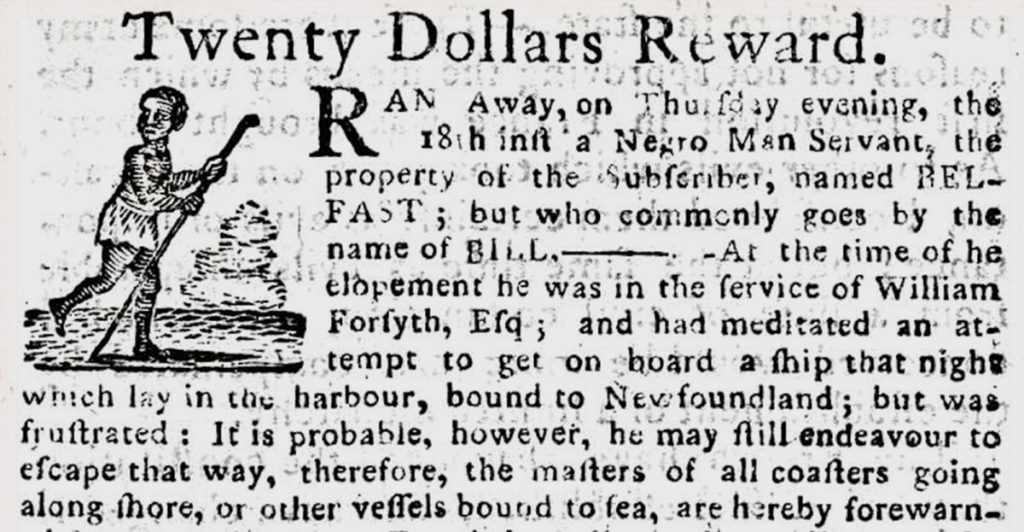 Detail of a fugitive-slave
ad published in the Halifax Weekly Chronicle on March 15, 1794
Detail of a fugitive-slave
ad published in the Halifax Weekly Chronicle on March 15, 1794
